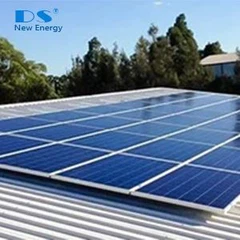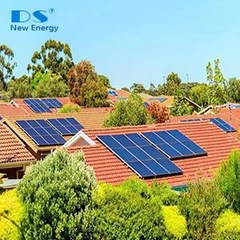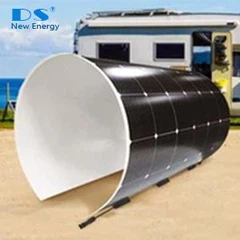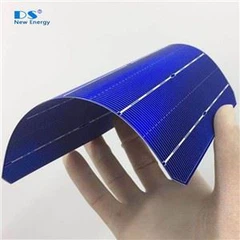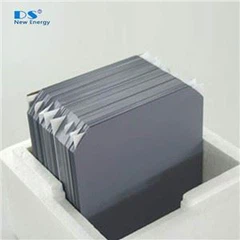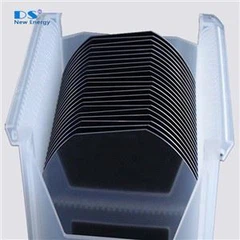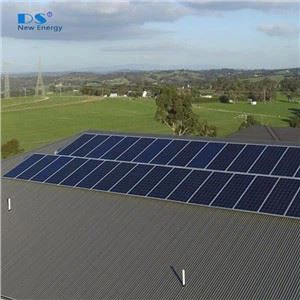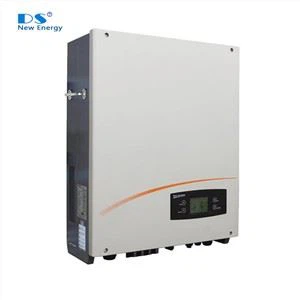
Advantage of GaAs solar cells
High conversion rate
According to Fullsuns ©, their current “GaAs GaAs Solar Cell Technology” has a maximum conversion rate of 31.6%, and this value has been recognized by the National Renewable Energy Laboratory (NREL) as the world's number one conversion rate. According to their future plans, their solar conversion rate will reach 38% by 2020 and 42% by 2025.
When it comes to the efficiency of the photovoltaic industry, it is inseparable from theoretical efficiency and mass production efficiency. One of the great advantages of gallium arsenide is that the theoretical efficiency is high, almost twice as high as that of crystalline silicon. This is a superior property of gallium arsenide. When the limitations of silicon are highlighted, GaAs is a good direction.
Strong plasticity
Unlike traditional solar panels, gallium arsenide thin film solar cells have the advantages of flexibility, flexibility, light weight, adjustable color, and shape plasticity. These advantages are important factors that can be applied to automotive design and manufacturing. In addition, since it is highly malleable, it is possible to obtain a maximum photosensitive area, and thus it is possible to greatly increase the amount of solar power generated and provide power for the automobile.
Good temperature resistance
Conventionally, current silicon photocells are no longer functioning properly at 200 °C. The temperature resistance of gallium arsenide batteries is better than that of silicon photocells. Experimental data shows that gallium arsenide batteries can still work normally at 250 °C, which should be able to be used in the automotive industry where real-time current charging and discharging and generating a large amount of thermal energy. Increased a lot of stability.
Good low light
The sensitivity of crystalline silicon photovoltaic systems to light is not very high. When the light is poor in rainy days, it is basically impossible to work. Thin-film solar cells can generate electricity in low light conditions, but only generate electricity. The efficiency is less than when the sun is abundant.
Disadvantage of GaAs solar cells
High cost
Hanergy is not the first company to start researching gallium arsenide batteries. Due to its superior performance under relatively high temperature conditions, GaAs batteries have attracted much attention. Many aerospace machines use solar energy using GaAs materials. System, but the cost of this cell is much higher than silicon cell.
First, because gallium arsenide production is very different from traditional silicon wafer production methods, gallium arsenide needs to be fabricated by epitaxial technology. The diameter of this epitaxial wafer is usually 4-6 inches, which is 12 than that of silicon wafers. The inch is much smaller, and the wafer needs a special machine. At the same time, the cost of GaAs raw materials is much higher than that of silicon. Gallium is scarce and arsenic is toxic, so the cost will be high.
Second, the attenuation of the cell is also one of the costly factors.
Cell attenuation
Traditional thin-film solar cells are generally darker in color due to process reasons, which means that the thermal effect is more serious. According to the measured data, the early thin-film solar cells generally have a decay of more than 10%, especially in the first few years of use. The highest can reach about 20%, so the general manufacturers will use the low standard method to sell the reduction. For example, 150W nominal 100W for sale. Even GaAs batteries need to be fully cooled to ensure their power generation efficiency and slow down thermal attenuation.
Package complexity
Gallium arsenide is more brittle than silicon in physical properties, which makes it easier to break when processed. Therefore, it is common practice to make it into a film and use a substrate (often Ge[Germanium]). To counter its disadvantages in this respect, but also increase the complexity of the technology. The process of thin-film cell determines that its package panel can not use tempered glass. Generally, it uses double-layer ordinary glass package. The damage and installation damage rate in the production process is relatively high. In addition, this package mode makes the heat dissipation problem more serious. The problem is difficult to solve.

